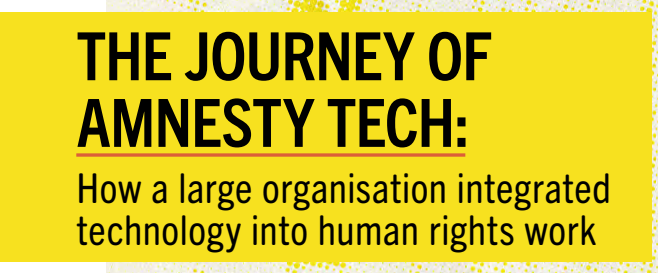When we look at the state of defending human rights today, it is clear that digital technologies play a role – both as a creator of risk and harm and, potentially, as a tool to protect rights and strengthen the work of rights defenders. However, this was not always as clear, and even today, it can be difficult to understand how digital technologies magnify existing harms, introduce new dynamics, and can be used by advocates.
Learning from what others have tried – what has worked and what hasn’t – is important in this space. As such, we were honoured to work with Amnesty Tech on a pair of case studies looking back at how Amnesty International has woven a critical understanding of technology into their human rights defence work. We conducted desk research and interviews with Amnesty Tech in 2020, and developed the case studies we’re sharing today. Despite the time that has passed, the learnings continue to be relevant for exploring questions like:
- How can we weave a deeper understanding of tech into human rights programme work? What impact will that have on our work?
- What does it take to shift internal ways of working?
- What are ways to approach digital threats and risk management?
In the first case study The journey of Amnesty Tech: How a large organisation integrated technology into human rights work, we look at how Amnesty Tech came to be – the advocates, resources and successes that led to Amnesty Tech becoming an integral part of the broader organisation’s human rights work.
In the second, Amnesty Tech Empowerment: Transforming digital security support for human rights defenders, we see how Amnesty’s deep knowledge of human rights defenders and their needs around risk management and protection shaped their approach to rising digital threats.
Download both case studies, below:

